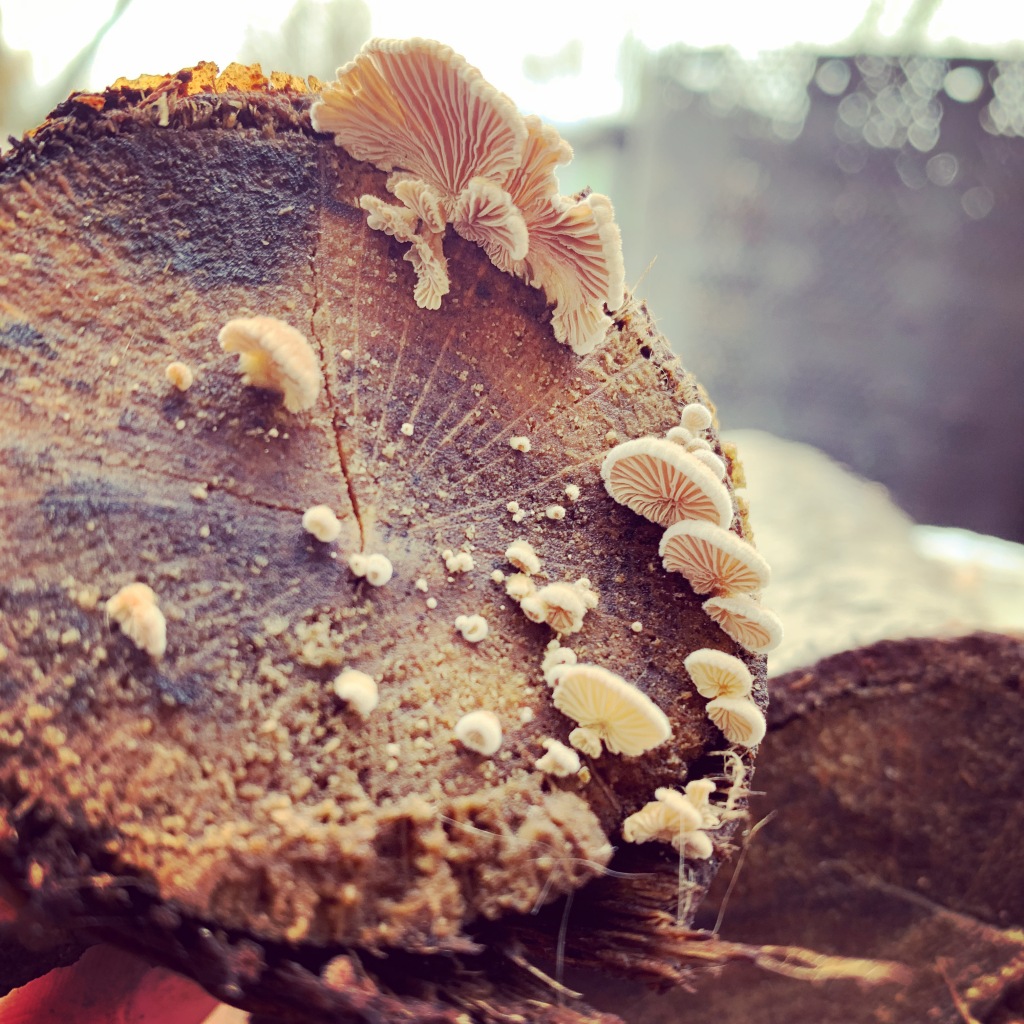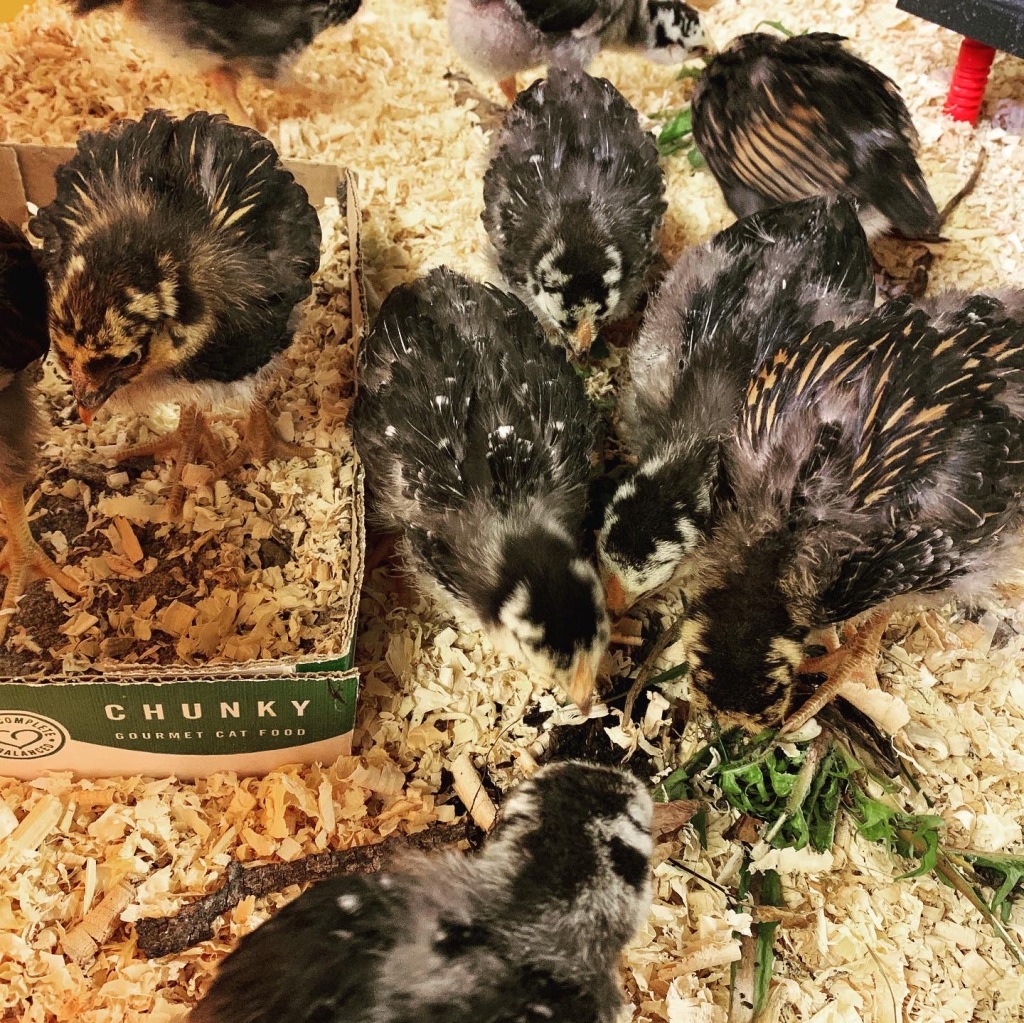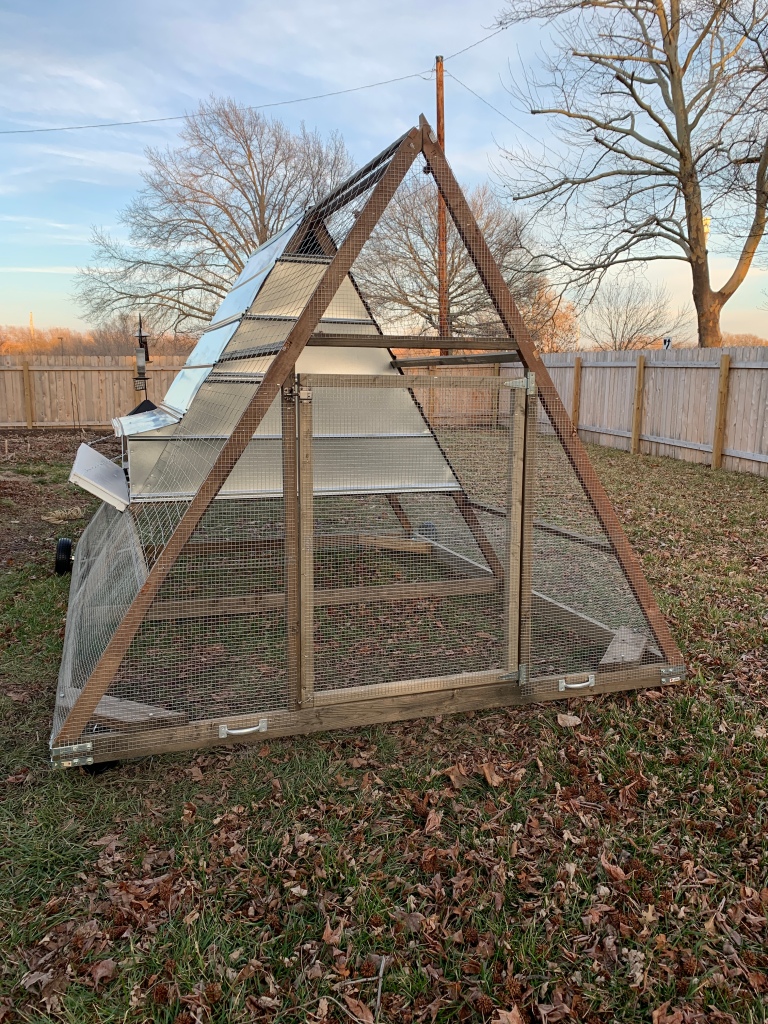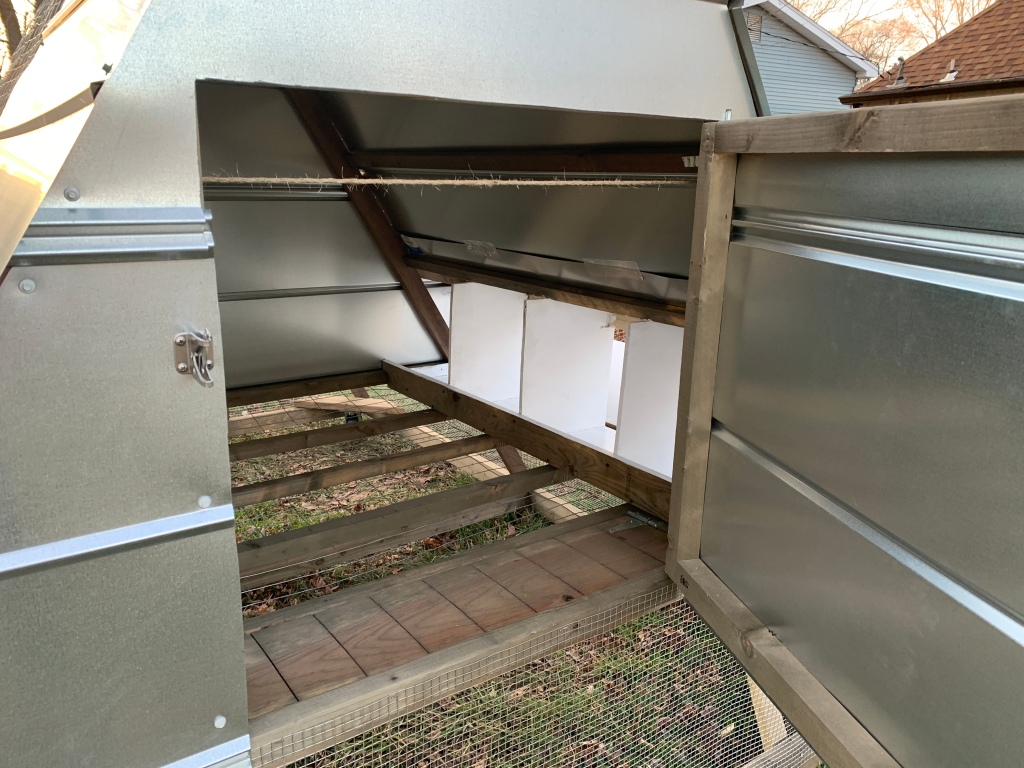
This spring has proven to be the most surreal experience. We had been gearing up for spring break, trying to plan all our big projects and organizing for one week, only to find out that Kansas closed schools for the rest of the school year due to COVID-19. My brain hurts, I slept terribly last night for nightmares and uncertain dreams about missing my kiddos at school, and I’m exhausted, so I won’t go into details here and now. Needless to say, until we start semi-teaching again online in two weeks, I have a lot of time on my hands.
While the girls are growing, I’ve been trying to accomplish various tasks and projects around the house. We brought home chicks just over two weeks ago, but I have a sneaking suspicion we are actually closer to three weeks old. We’ve recently started establishing the pecking order with two of my Golden-laced girls doing lots of chest-bumping and surprise landings to spook and intimidate.

To help with the pecking order chaos, I’m trying to keep them occupied with an extra feeder, lots of sticks to climb and play on, and a variety of engaging treats. We love hard-boiled egg so far (yes, you can and should feed cooked egg to babies!) and are especially excited by Daddy’s leftover seedlings from thinning. We will pick up a little Romaine seedling and run peeping through the brooder with the rest of the girls at our backs!

A big point of excitement, and relief, for us was to finally finish building the coop. We purchased plans online and hoped to build it ourselves, but this ended up being a big and expensive project! We knew it wouldn’t be cheap to buy a coop anyways, but I was hoping to spend less than $500, and it cost closer to $700 after materials.
It was our first carpentry project, and we didn’t bite off an easy one to start. We had to make some alterations as we went because some measurements were off and we made some mistakes reading the plans, but we are very happy with how it turned out!



The coop is moveable, even by me – I added a rope to the front so I can pull it around the yard. The girls will have full access to the soil, bugs, grass, and snacks while staying confined and safe from neighborhood disturbances and at night they can climb the ramp to sleep above group for added safety. It combines so many elements I was looking for in a coop all into one package, and fingers crossed that it works well for the gals!
With some extra time the last couple of days I’ve continued to do some prep to the garden – cleaning out the leaves and large debris in the garden and building a larger woodpile, now that we’re low on wood. Now’s a time to keep busy in between the rains.
In the midst of all this chaos, being stuck at home and without much to do invites us to slow down. We’ve been stuck in a whirlwind of engagements, to-do lists, meetings, expectations, long days, for months. As miserable as a time as this might be, what with social distancing and all, perhaps its a call to heal, to slow, and to be thoughtful. While working in the garden this week I had so many opportunities to admire tiny sprouts, little feathers, and wee mushrooms.

I’ll leave you all with this quote from Kitty O’Meara for tonight:
“And the people stayed home. And read books, and listened, and rested, and exercised, and made art, and played games, and learned new ways of being, and were still. And listened more deeply. Some meditated, some prayed, some danced. Some met their shadows. And the people began to think differently.
“And the people healed. And, in the absence of people living in ignorant, dangerous, mindless, and heartless ways, the earth began to heal.
“And when the danger passed, the people joined together again, they grieved their losses, and made new choices, and dreamed new images, and created new ways to live and heal the earth fully, as they had been healed. “
May you dream and heal wonderfully over the next few weeks and months.







